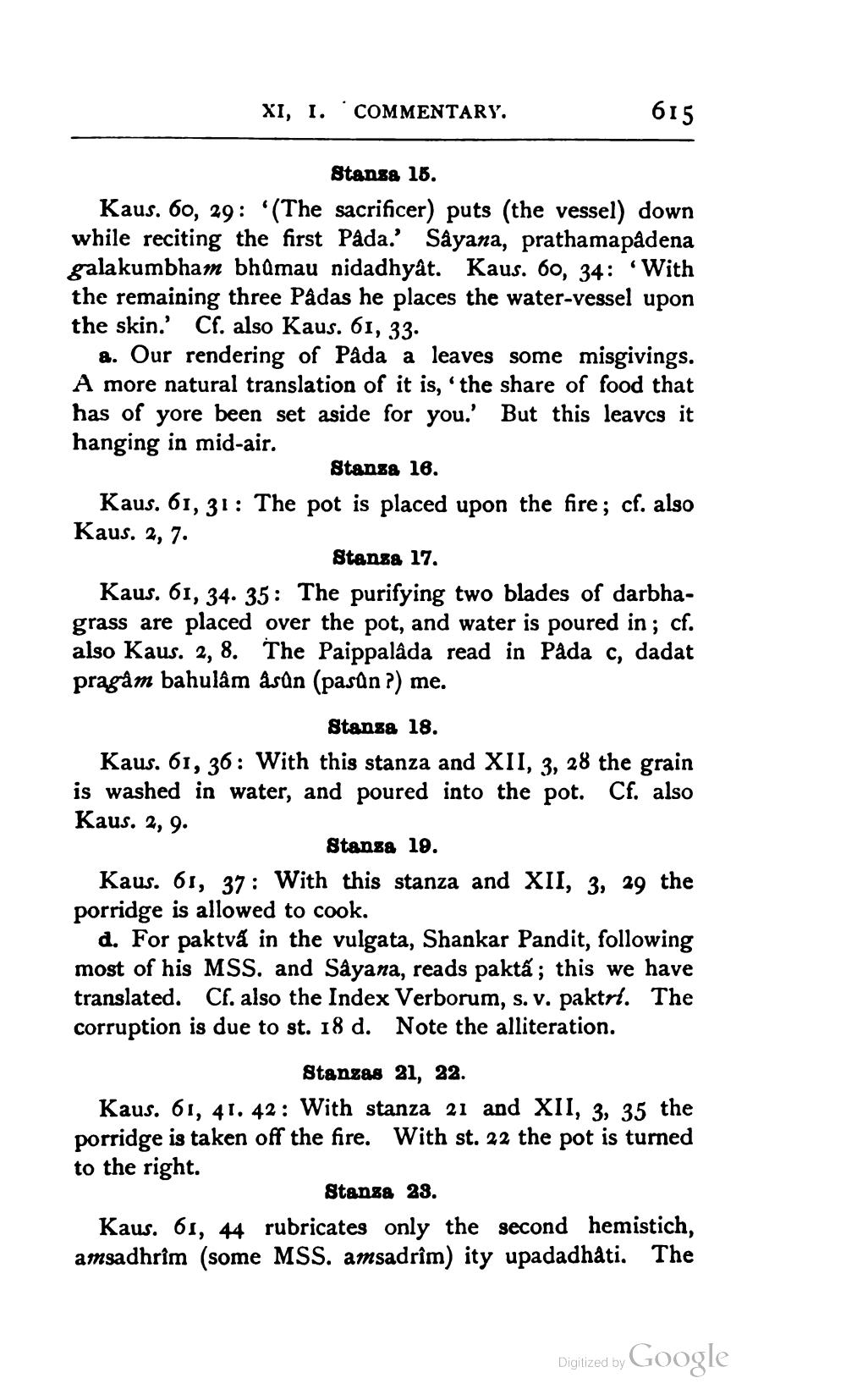________________
XI, 1. COMMENTARY.
615
Stansa 15. Kaus. 60, 29: "(The sacrificer) puts (the vessel) down while reciting the first Pada.' Sảyana, prathamapádena galakumbham bhūmau nidadhyât. Kaus. 60, 34: With the remaining three Pâdas he places the water-vessel upon the skin. Cf. also Kaus. 61, 33.
a. Our rendering of Pada a leaves some misgivings. A more natural translation of it is, 'the share of food that has of yore been set aside for you.' But this leaves it hanging in mid-air.
Stansa 16. Kaus. 61, 31: The pot is placed upon the fire; cf. also Kaus. 2, 7.
Stansa 17. Kaus. 61, 34. 35: The purifying two blades of darbhagrass are placed over the pot, and water is poured in; cf. also Kaus. 2, 8. The Paippalâda read in Páda c, dadat pragam bahulâm åsan (pasûn 2) me.
Stanza 18. Kaus. 61, 36: With this stanza and XII, 3, 28 the grain is washed in water, and poured into the pot. Cf. also Kaus. 2, 9.
Stansa 19. Kaus. 61, 37: With this stanza and XII, 3, 29 the porridge is allowed to cook.
d. For paktvá in the vulgata, Shankar Pandit, following most of his MSS. and Sayana, reads paktá; this we have translated. Cf. also the Index Verborum, s. v. paktri. The corruption is due to st. 18 d. Note the alliteration.
Stanzas 21, 22. Kaus. 61, 41. 42: With stanza 21 and XII, 3, 35 the porridge is taken off the fire. With st. 22 the pot is turned to the right.
Stanza 28. Kaus. 61, 44 rubricates only the second hemistich, amsadhrim (some MSS. amsadrîm) ity upadadhati. The
Digitized by Google




